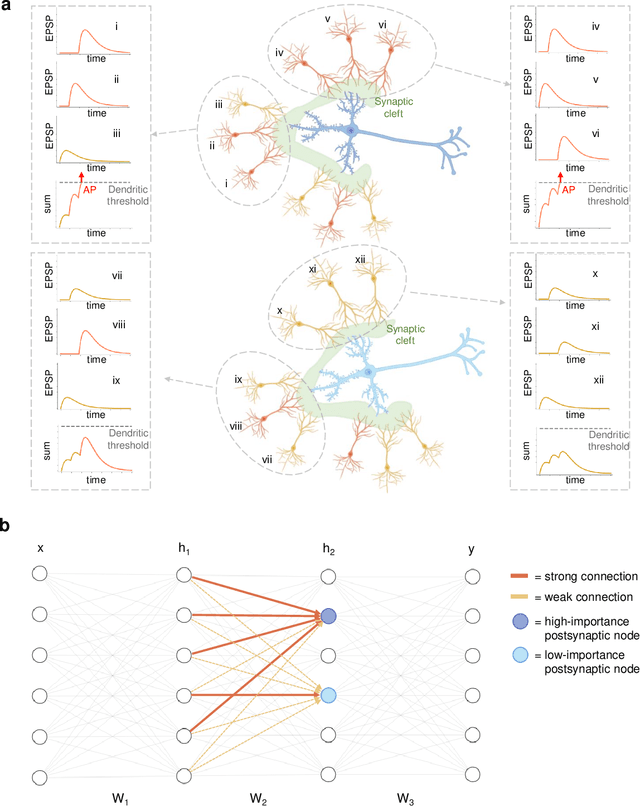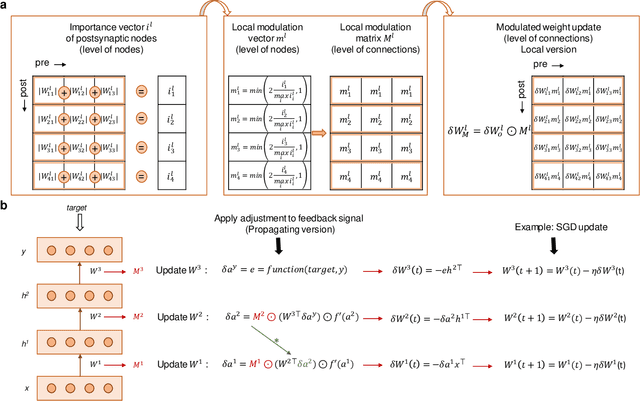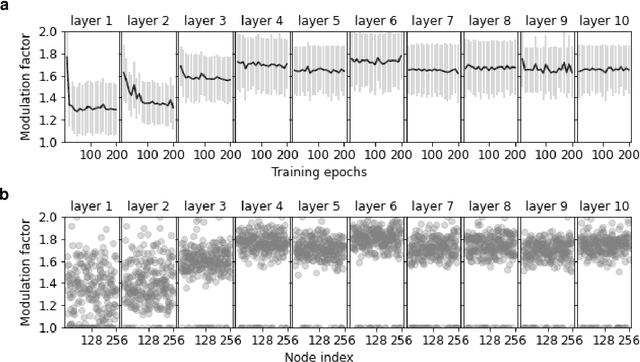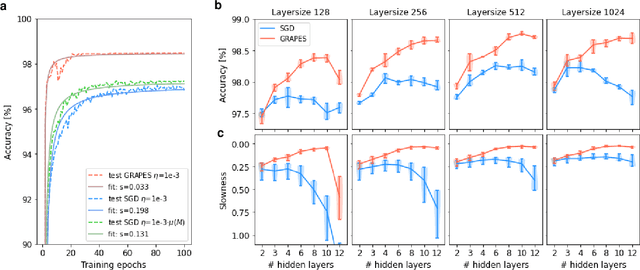Learning in Deep Neural Networks Using a Biologically Inspired Optimizer
Paper and Code
Apr 23, 2021



Plasticity circuits in the brain are known to be influenced by the distribution of the synaptic weights through the mechanisms of synaptic integration and local regulation of synaptic strength. However, the complex interplay of stimulation-dependent plasticity with local learning signals is disregarded by most of the artificial neural network training algorithms devised so far. Here, we propose a novel biologically inspired optimizer for artificial (ANNs) and spiking neural networks (SNNs) that incorporates key principles of synaptic integration observed in dendrites of cortical neurons: GRAPES (Group Responsibility for Adjusting the Propagation of Error Signals). GRAPES implements a weight-distribution dependent modulation of the error signal at each node of the neural network. We show that this biologically inspired mechanism leads to a systematic improvement of the convergence rate of the network, and substantially improves classification accuracy of ANNs and SNNs with both feedforward and recurrent architectures. Furthermore, we demonstrate that GRAPES supports performance scalability for models of increasing complexity and mitigates catastrophic forgetting by enabling networks to generalize to unseen tasks based on previously acquired knowledge. The local characteristics of GRAPES minimize the required memory resources, making it optimally suited for dedicated hardware implementations. Overall, our work indicates that reconciling neurophysiology insights with machine intelligence is key to boosting the performance of neural networks.
 Add to Chrome
Add to Chrome Add to Firefox
Add to Firefox Add to Edge
Add to Edge